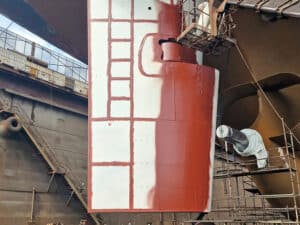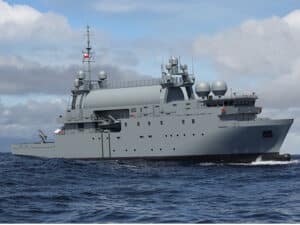
APL and ports see how seawater scrubber stacks up
Written by The ports of Los Angeles and Long Beach are funding a long term test of the effectiveness of seawater scrubbers in reducing vessel air pollution. The technology uses seawater to filter pollutants from ships’ auxiliary engines and boilers. It is expected to reduce a ship’s sulfur oxide emissions by up to 99.9 percent and particulate matter by as much as 85 percent.
The ports of Los Angeles and Long Beach are funding a long term test of the effectiveness of seawater scrubbers in reducing vessel air pollution. The technology uses seawater to filter pollutants from ships’ auxiliary engines and boilers. It is expected to reduce a ship’s sulfur oxide emissions by up to 99.9 percent and particulate matter by as much as 85 percent.
Funded in part by a $1.65 million grant from the Technology Advancement Program (TAP), a joint initiative of the ports of Los Angeles and Long Beach, the technology will be tested on an APL container vessel starting in 2011. The entire demonstration project is expected to last 36 months.
The seawater scrubber, supplied through a partnership between Bluefield Holdings Inc. and Krystallon, Ltd., uses seawater to filter exhaust contaminants from a ship’s auxiliary engines and boiler before they exit the exhaust stack of a ship. Once solid carbon contaminants have been removed, the seawater used during the scrubbing process is then treated and cleansed before being discharged. The solid contaminants are contained and collected for later disposal.

As part of the three-year project, the scrubber technology on the APL test vessel will be evaluated over a one-year period during the ship’s calls to the San Pedro Bay ports. It is expected to result in air emission reductions of approximately 80-85 percent in diesel particulate matter, 99.9 in sulfur oxide emissions, more than a 90 percent decrease in volatile organic compounds (VOC) and another 10 percent reduction in nitrogen oxide pollutants.
Diesel particulate matter is classified in the state of California as a toxic air contaminant based upon its potential to cause health problems and cancer. Sulfur oxides, VOC and nitrogen oxides are gases that contribute to smog.
“APL has long engaged with industry, the public sector and academia in search of new ways to mitigate the environmental impacts of global trade,” said Earl Agron, Vice President of Environmental Affairs at APL. “This latest effort with the ports of Los Angeles and Long Beach is in the same spirit of cooperation and discovery.”
“The seawater scrubbing technology shows tremendous long-term potential for reducing emissions at our ports and improving the environment,” said Port of Los Angeles Executive Director Geraldine Knatz, Ph.D. “We’re excited about testing this innovative equipment and evaluating its promise for more widespread use.”
“Many of the ocean carriers are looking for ways to reduce their vessels’ emissions and projects like this are an ideal way to demonstrate the effectiveness of new technology to the industry,” said Port of Long Beach Executive Director Richard D. Steinke.





Leave a Reply
You must be logged in to post a comment.